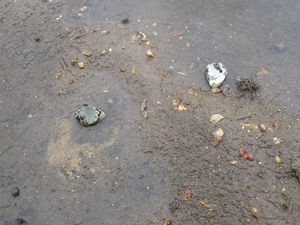 The Avon Valley has historically supported nationally important populations of breeding northern lapwing (Vanellus vanellus), redshank (Tringa totanus) and common snipe (Gallinago gallinago). In common with other lowland wet grassland sites throughout Britain, the numbers of breeding waders in the Avon Valley have declined dramatically since the early 1980s, with declines of 64% in lapwing, 75% in redshank and 97% in snipe during 1982-2002.
The Avon Valley has historically supported nationally important populations of breeding northern lapwing (Vanellus vanellus), redshank (Tringa totanus) and common snipe (Gallinago gallinago). In common with other lowland wet grassland sites throughout Britain, the numbers of breeding waders in the Avon Valley have declined dramatically since the early 1980s, with declines of 64% in lapwing, 75% in redshank and 97% in snipe during 1982-2002.
The Avon Valley was designated as an Environmentally Sensitive Area (ESA) in 1993. Since 2003 farmers have been encouraged to join the Higher Level Stewardship (HLS) scheme, and uptake by farmers within the valley has been high. In total, this amounts to a considerable investment in habitat restoration over the last 20 years, but to date there has been no reversal of the trend in wader numbers.
The GWCT has been involved in monitoring breeding waders in the Avon Valley for over 20 years. We hold quantitative data on field conditions and wader numbers and distribution on sites with breeding waders in the Avon Valley in four years: 1990, 1996, 2003 and 2010. Since 2007, we have collected data on lapwing breeding success on 15 farms. Our data for 2007-2014 show clearly that poor breeding success is driving the decline in lapwings and that low nest survival resulting from high levels of predation is the key issue.
Lapwing productivity in the Avon Valley has averaged 0.41 fledged young per pair, reaching a maximum of 0.92 in just one year: this is considerably below the threshold average of 0.7 fledged young per pair per annum needed to maintain a stable population. This is similar to the situation documented in other parts of the UK, e.g. the Norfolk Broads, and in the Netherlands, where mammalian predation on lapwing nests has been recorded at levels where it is limiting population growth.